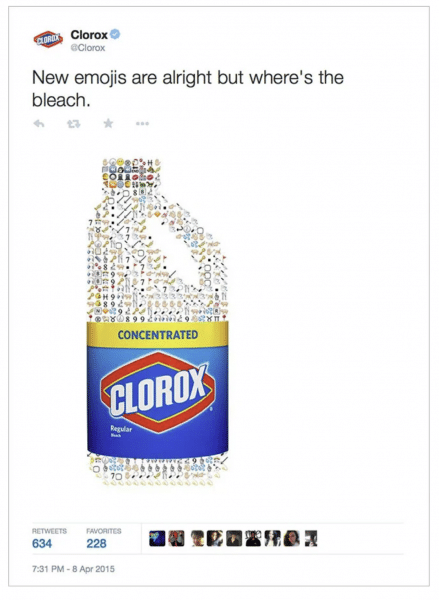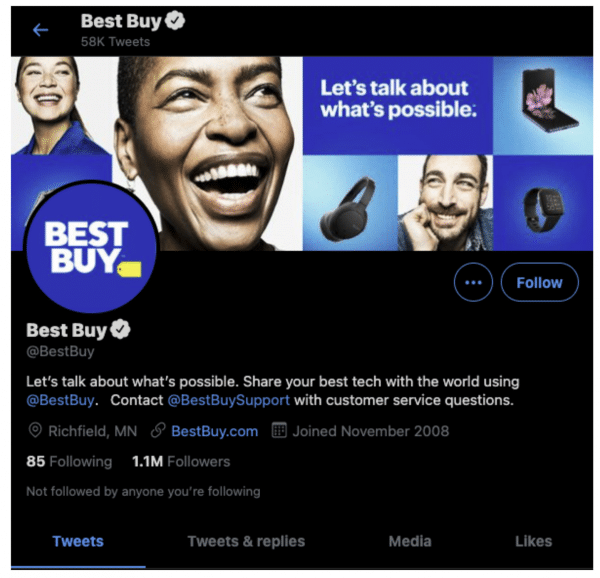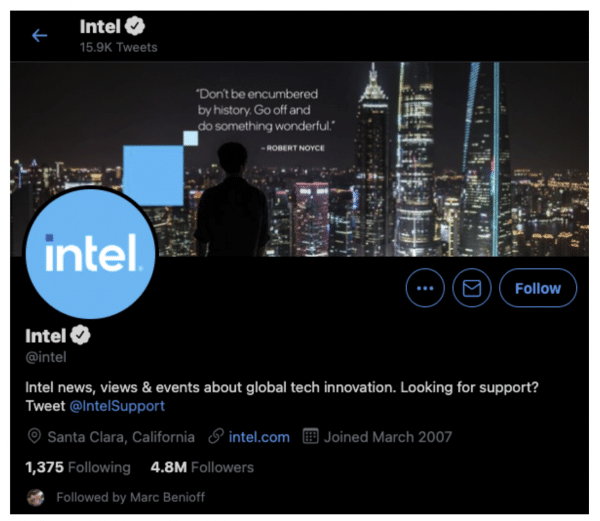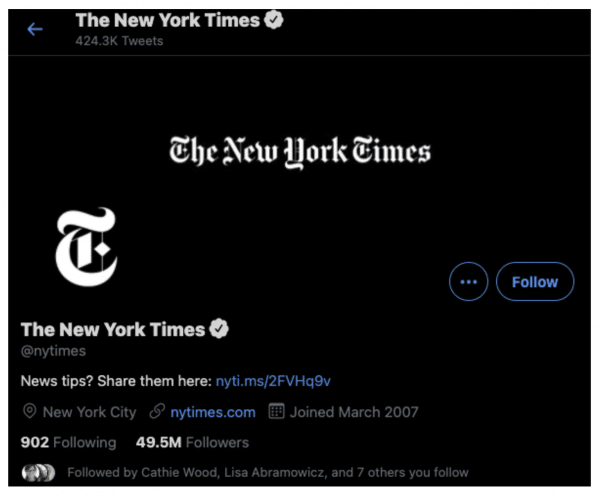How to Develop Your Brand’s Social Media Guidelines (With Examples)
Offering the opportunity to reach over 5.17 billion users users, social media platforms are the perfect places to build your company’s brand. Indeed, more and more businesses are taking to social networks like Facebook, Instagram, YouTube, LinkedIn, Twitter, TikTok and other channels to reach and engage their target customers.
In this article, you will learn some of the strategies, tactics and best practices you can apply in building your social media brand.
New to social media marketing? Check out two of our previous articles: What is Social Media Marketing? & How to Create a Social Media Marketing Plan.
What are social media guidelines?
- As social media use becomes increasingly prevalent in the business world — with 71% of small to medium-sized businesses using social media platforms to market their brand, (Renolon, 2022) it is crucial for businesses that harness the power of social media to develop a set of social media guidelines.
But what is it specifically? Put simply, social media guidelines are best practices that come in the form of a rulebook or a manual to assist you and your team in navigating the messy but marvellous world of social media.
What is the difference between social media guidelines and social media policy?
Though these terms are often used interchangeably, they are vastly different in nature.
Social media guidelines are instructional in nature. They are used to guide a company and its employees in how they should behave on social media.
These guidelines typically include social media etiquette (how to behave online), beneficial tools for employees to use on social media, as well as links to resources. Note that social media guidelines aren’t quite the same as community guidelines or social media style guides—these relate to how your brand’s online communities should be managed as well as its tone of voice and style.
A social media policy, on the other hand, is more comprehensive. This normally includes legally binding clauses as well as terms and conditions that are designed to protect a company or brand from legal risks.
Why do we need social media guidelines?
Why we need social media guidelines:
In today’s digital landscape, your employees are probably avid social media users — whatever they say or however they act online could potentially affect the image of your brand, either positively or negatively.
Hence, it’s critical that your company’s social media guidelines act as proper guidelines that empower your employees to take the right actions and make the right decisions on their social media platforms. With a strong set of social media guidelines in place, your employees might even grow to be loyal brand advocates in the long run.
Establishing a gold standard for online behaviour also ensures that your employees’ posts align with your brand identity, thereby protecting them from committing blunders such as:
- Misrepresenting your brand or clients
- Publicly behaving in a manner that doesn’t align with your brand image
- Disclosing proprietary information about your company
- Making factual errors when representing your corporation or its clients
- Igniting Public Relations (PR) crises
Example of a PR crisis that could occur without clear guidelines:
Back in 2015, tech giant Apple released an assortment of new emojis which provided users the option to change their human emojis’ skin tones to better portray diversity.
Neglecting the fact that the emoji update was to encourage human diversity, the team behind Clorox’s Twitter account sent out a tweet of a Clorox bleach bottle made up of emojis alongside the caption, “New emojis are alright but where’s the bleach.” Their intention then was to ride on the trending news and capture public attention, a tactic known as “Trendjacking”. (Read here to learn about Trendjacking and how to properly utilise it.)
What the team thought was a harmless tweet soon turned into a PR crisis that sparked public outrage. Many had the perception that the brand was being racist by preferring emojis that were ‘all white’ and that the way to achieve the white emojis was to bleach them!
If there were a set of clear social media guidelines in place to guide Clorox’s social media team, this debacle could have been avoided altogether.

Source via EveryoneSocial
How to Craft Your Social Media Guidelines
Before you jump into crafting your brand or company’s social media guidelines, do take the following tips into consideration:
- Establish Two Sets of Guidelines
-
- The first set of guidelines would be for the employees who are in charge of posting on your brand’s social media platforms.
- The second set of guidelines would serve as a rulebook on the personal use of social media for all of your company’s employees on social media platforms.
- Get Your Team Involved
-
- Involve your team in the brainstorming process and determine the guidelines that best benefit your team as a whole.
- Aim To Educate Rather Than Restrict
-
- While you want to steer clear from possible crises, don’t make your team feel as though they are newbies or lack common sense. Craft guidelines that educate, not speak down, to whomever reads them.
- Rather than being driven by fear, remind yourself that the ultimate goal of your guidelines is to encourage your team to create posts that are both creative and professional.
What To Include In Your Social Media Guidelines
Here is a list of things that you can include in your social media guidelines:
- An introductory paragraph on your brand’s purpose
- Company or brand style guide to ensure consistency across all social media platforms
- Disclosure policy
- Areas of confidentiality
- Social etiquette that employees should display online
- No-go areas (E.g. Religious slurs, sexist and racist remarks, bigoted remarks etc.)
- Tone of voice, for example, encouraging employees to speak in the first person when telling their unique stories
- Do’s and Don’ts
- Customer service protocols to follow when faced with complaints
Below are examples of corporate social media guidelines you can take reference from.
Examples of Good Social Media Guidelines
1. Best Buy

Source via Best Buy’s Twitter
Best Buy’s social media guidelines are twofold – what their employees should do and what their employees should never divulge. Their social media guidelines are best summarised with these statements: “Protect the brand. Protect yourself.”
Examples of what Best Buy lists under ‘what employees should do’:
- Employees should reveal their affiliation with Best Buy.
- Employees should make it clear that the opinions published on their personal social media accounts are strictly personal and do not represent Best Buy in any way.
- Employees should discern the personal information they disclose.
Example of what is filed under ‘what employees should never divulge’:
- Financial or operational information that is non-public – “If it’s not already public information, it’s not your job to make it so.”
- Information surrounding Best Buy’s promotions such as internal communications regarding drive times, promotional activities, or inventory allocations. Advance ads, drive time playbooks, holiday strategies, as well as Retail Insider editions, are also included.
- A customer’s personal information should never be disclosed to the public.
2. Intel

Source via Intel’s Twitter
The second example would be technology giant Intel. Here are some examples of their social media guidelines:
- Employees are encouraged to provide exclusive and personal perspectives on what’s happening at Intel or around the world while sticking to their areas of expertise.
- Employees should post meaningful and respectful comments and avoid spamming or making offensive comments.
- Employees are asked to always pause and think before posting. With that being said, comments from Intel are expected to be made promptly whenever a response is appropriate.
- Confidentiality, as well as proprietary information and content, should be respected.
- Be polite when disagreeing with others’ opinions while ensuring that the comments made are appropriate.
- Familiarise and abide by the Intel Code of Conduct and the Intel Privacy Policy.
3. The New York Times

Source via The New York Times’ Twitter
The Times’ social media policy stands out because the media giant collected quotes from several Times reporters and wove them into their social media guidelines as examples.
Here are some noteworthy sections from the Times’ social media guidelines:
- “In social media posts, our journalists must not express partisan opinions, promote political views, endorse candidates, make offensive comments or do anything else that undercuts The Times’ journalistic reputation.”
- “If the criticism is especially aggressive or inconsiderate, it’s probably best to refrain from responding. We support the right of our journalists to mute or block people on social media who are threatening or abusive. You may also consider using Twitter’s conversation settings.”
- Rukmini Callimachi says: “I used to get really upset and respond to abuse — which only made it worse. What I finally discovered is that if I just aggressively block the abusive people, I can control the flow — and that’s, I think, because people who speak that way to women are generally followed by other people who think it’s O.K. to use crass words. By blocking anyone and everyone who uses abusive terms, I am able to halt the conversation. I think this is especially important as a strategy for women, at a time when people think that rape memes are a good way to respond to a story they don’t like by a female New York Times writer.”
Key Takeaways
Every brand should invest time to establish a set of social media guidelines that are both workable and practical. Where possible, you should involve your team in the brainstorming process so that there is a collective sense of ownership.
Instead of clamping down on opposing views, seek to educate and guide your employees on how they should respect and protect proprietary information while politely interacting with their followers or customers.
Above all, while considering your company’s unique culture and values, do also continue to learn from the best in your field. With that, we hope that this article has helped you to grasp a better understanding of what social media guidelines are and also how you can establish your own.
Eager to learn more? Sign Up For Our WSQ Social Media Marketing (SMM) Course!
If you are eager to learn more about social media marketing, you can sign up for our Social Media Marketing course where you will be well-equipped with the fundamental frameworks, concepts, and tools needed to succeed in social media.
You may also browse and sign up for the other digital marketing courses held in-person in Singapore or online, which cover the five other core modules in Equinet Academy’s Digital Marketing Curriculum.
- Digital Marketing Strategy
- Content Marketing Strategy
- Search Engine Optimisation
- Digital Advertising
- Digital Marketing Analytics with Google Analytics
At the end of all six courses, you will be awarded the Certified Digital Marketing Strategist Certificate which will put you in good stead with potential employers and business partners.